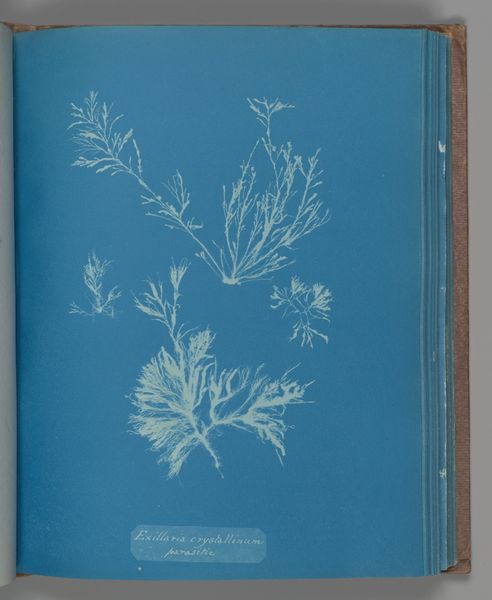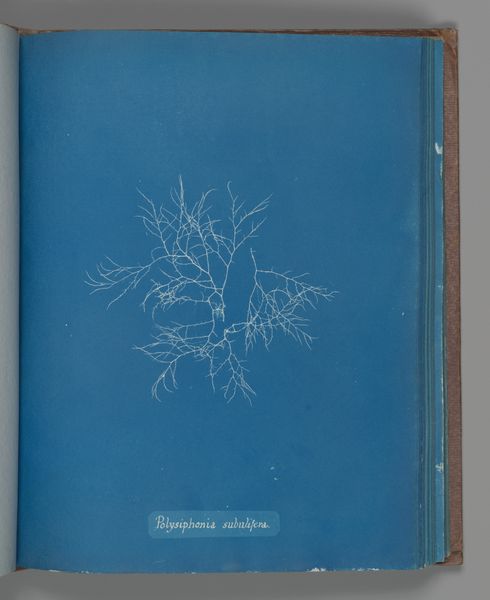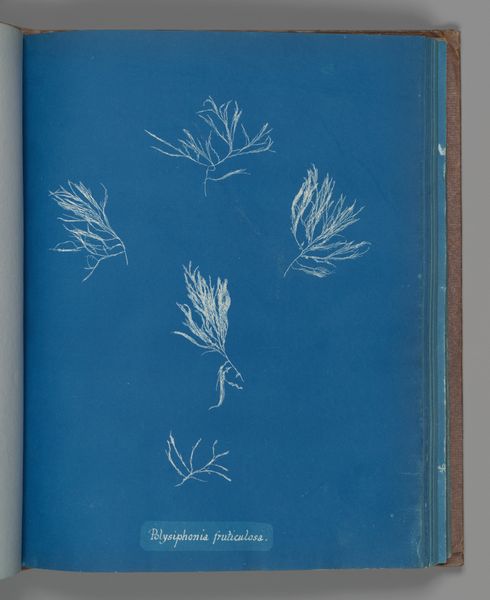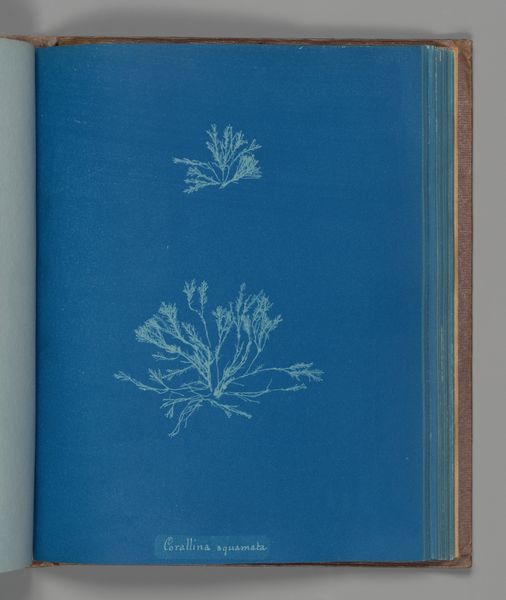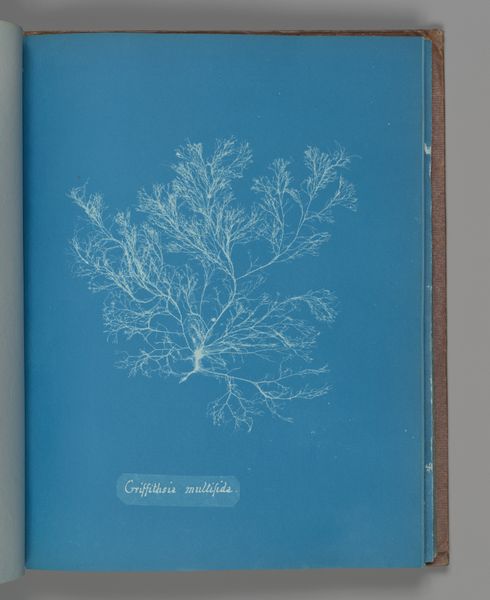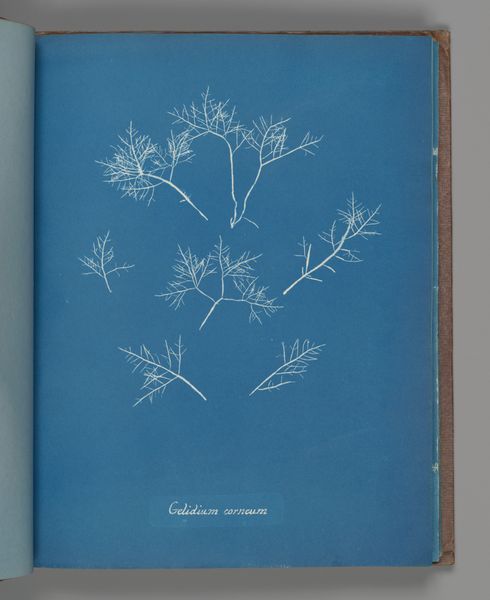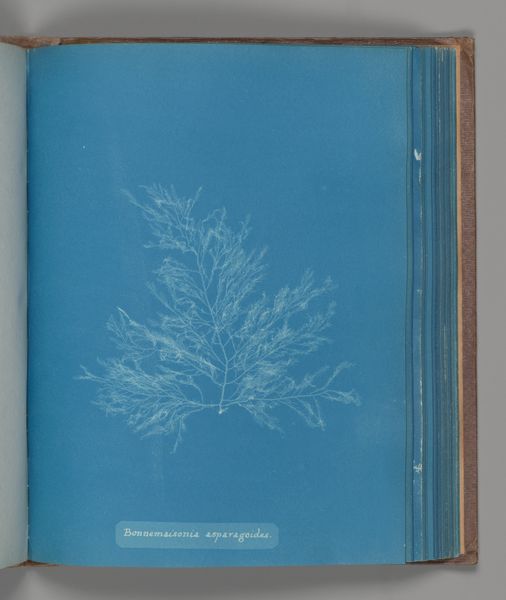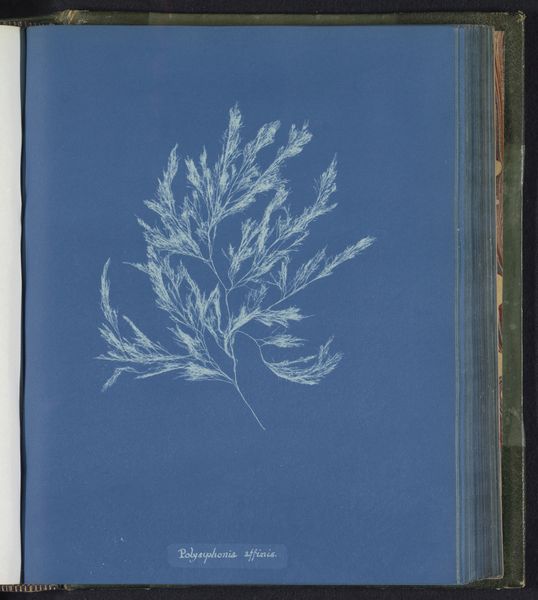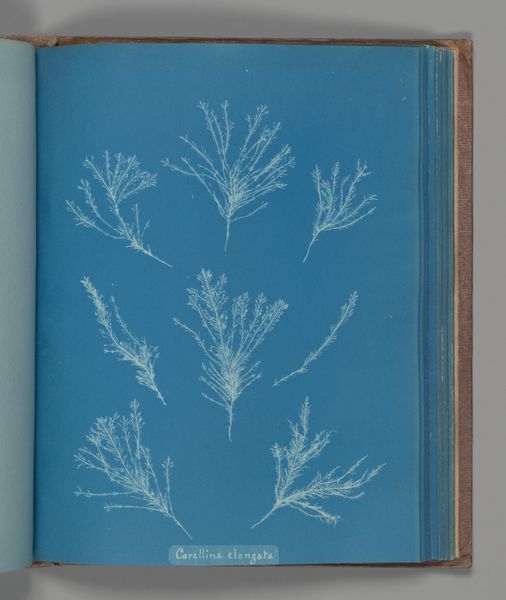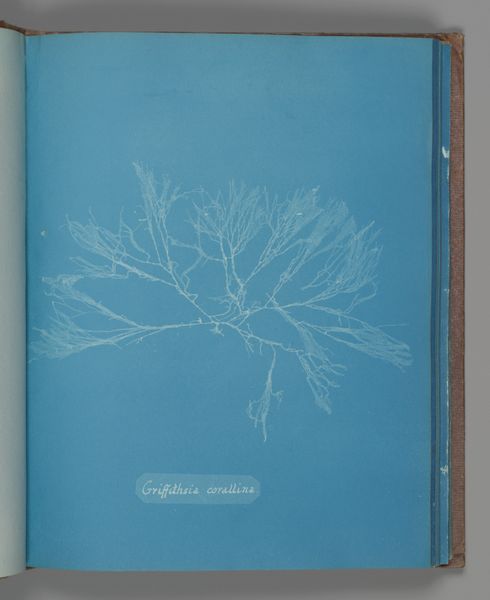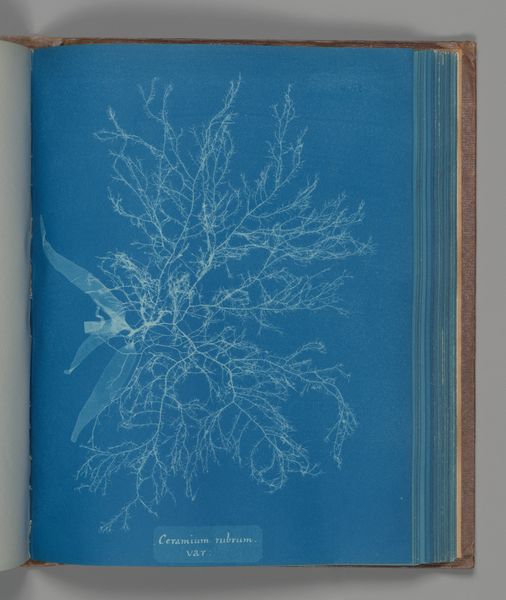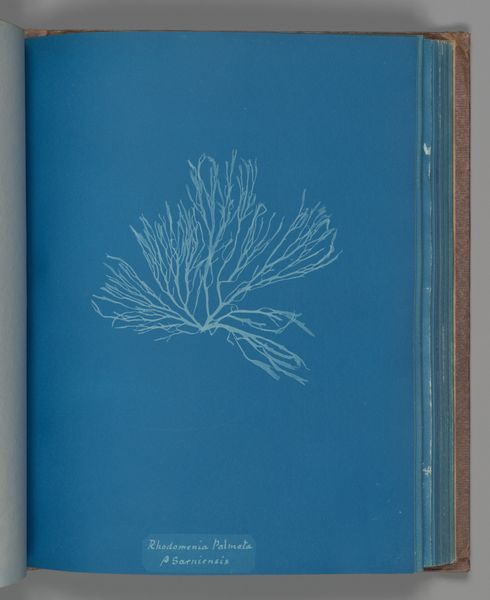
print, paper, cyanotype, photography
#
still-life-photography
# print
#
paper
#
cyanotype
#
photography
#
geometric
#
plant
Dimensions: Image: 25.3 x 20 cm (9 15/16 x 7 7/8 in.)
Copyright: Public Domain
Editor: So, here we have Anna Atkin's "Cystoseira ericoides", a cyanotype from the mid-1850s. I’m struck by how delicate and ghostly the seaweed appears against that intense blue. What historical memories or meanings do you see in it? Curator: This cyanotype is not merely a depiction of seaweed; it's a portal into a fascinating period where science, art, and nascent photographic processes intertwined. The plant becomes an artifact itself, preserved in Prussian blue – a color carrying its own weight, think military uniforms, architectural blueprints… Why do you think Atkins chose this technique, instead of say, pressing the seaweed? Editor: I suppose the cyanotype freezes it more directly – she's preserving the actual shape, rather than an artist's rendering or dried specimen. Was it common to record seaweed this way at that time? Curator: Exactly. This links it to a desire for objective, almost scientific accuracy which became common with the rise of positivism, which then influenced painting... The starkness isolates the specimen in a way a typical botanical illustration wouldn’t. Does that change your understanding of her image? Editor: Definitely. Knowing it was about objective observation highlights the abstract and artistic qualities even more, this shadow of the plant against such a symbolic background. Curator: That friction, that space in-between objective document and abstract art object…it invites us to think about our relationship with nature and with science itself. And the geometric layout brings further dimension... it makes one question nature vs nurture and how our knowledge gets built through systems. How does that knowledge become more important than its source? Editor: It’s amazing how much meaning can be drawn from something that, at first glance, looks like just a simple photograph of seaweed. It really does encourage questioning knowledge and documentation, not only the visual symbols themselves, but our interpretation of it.
Comments
No comments
Be the first to comment and join the conversation on the ultimate creative platform.
